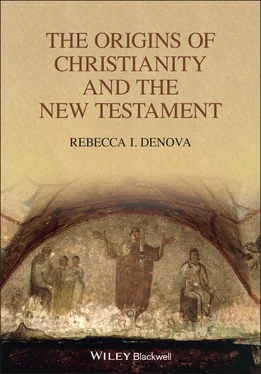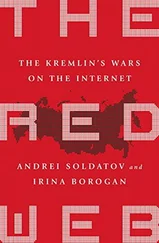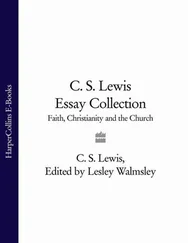All ethnic groups shared common ideas and rituals concerning the divine, but there was no one “authority” to turn to; a concept such as the Vatican did not exist. If you had questions, you could consult a member of the priesthood(specialized experts), and you may receive different answers from different individuals. “ Sacred Scriptures” varied from group to group and region to region. The closest concept such as our Bible was found in the works of Homer, The Iliad and The Odyssey . Everyone in the Mediterranean Basin knew these stories, which included stories of constant interaction with the gods.
Polytheism and Monotheism
P olytheism(the belief in multiple deities), or sometimes pantheism(the belief in all powers), is always juxtaposed to monotheism(the belief in one god), understood as its polar opposite. However, the terms are problematic because they are modern. No one in the ancient world would identify with being a “polytheist.” More importantly, there was no such concept as “ancient monotheism.” All ancient people were polytheists, including the Jews .
In Western culture, monotheism specifically refers to the God of the Bible – the God of Judaism, Christianity, and Islam. This is demonstrated by the fact that this God is always written with a capital “G.” It designates the God of Israel above all other “gods,” and assumes an element of faith. In the first century, however, the God of Israel was simply one among the many thousands of deities that populated the universe.
Cultures viewed the universe on three levels: the heavens (the abode of the gods); the earth (the abode of humans); and the underworld, often referred to as “the land of the dead.” Gods could “transcend,” or travel around all three. Many groups had the concept of a “high god,” or a “king of the gods,” who ruled over diverse gradients of “powers.” Lower divinities were called daemons, but eventually were seen as evil, and hence the popular word “demon.” Gods as well as demons could “possess” people. In the latter case, this was an ancient explanation of mental health issues and physical disabilities.
Like their neighbors, ancient Jews conceived of a hierarchy of powers in heaven: “sons of God” (Genesis 6), angels, archangels (the messengers from God who communicate God’s will to humans), cherubim, and seraphim. Jews also recognized the existence of demons, with many examples in the ministry of Jesus in the gospels of his role as an exorcist.The foundational story for the idea that Jews were monotheistic is when Moses received the commandments of God on Mt. Sinai: “I am the Lord your God… You shall have no other gods before me.” The Hebrew should be translated as “no other gods beside me.” This does not indicate that other gods do not exist; it is a commandment that the Jews were not to worship any other gods. Worship in the ancient world always meant sacrifices. Jews could pray to angels and other powers in heaven, but they were only to offer sacrifices to the God of Israel.
This command only to offer sacrifices to the God of Israel is one of the major differences between Jews and all other traditional ethnic cults .
The Jewish texts consistently refer to the existence of the gods of the nations (ethnic groups): Deuteronomy 6:14 “do not follow other gods”; 29:18 “to serve the gods of those nations”; 32:43 “Praise O heavens, his people, worship him all you gods!”; Isaiah 36:20 “who among all of the gods of these nations have saved their nations?”; and Psalm 821 “God presides in the great assembly; he renders judgment among the gods.” In the story of the Jews’ Exodus from Egypt, God battles against the gods of Egypt to demonstrate who controls nature. This makes little sense if their existence was not recognized: “…I will bring judgment on all the gods of Egypt” (Exodus 12:12).
While Jews only offered sacrifices to the God of Israel, they shared a common conviction that all the gods should be respected; it was perilous to anger the other gods. Exodus 22:28 ordered the Jews never to revile the gods of the other nations. Early Christians accepted these levels of powers in heaven (and hell), and the Apostle Paul often referred to the existence of the gods of other nations in his letters. He berated them for interfering with his missions.
Throughout this text, we will continue to utilize the capital “G” to distinguish the God of Israel from the other deities throughout the Roman Empire.
We often use the word “ myth” to automatically designate “something false.” In the study of religion, myths are ways in which people understand experiences with the divine, through stories, images, and metaphors. By their very nature, myths are not subject to verification. Myths are multivalent, meaning they are subject to many different interpretations. Myths help to create a worldview to explain origins (where did we come from?), but more importantly they help to validate the social order of the contemporary world. Myths function to explain the ideals and institutions of society, gender roles, and law codes.
All religions have “origin myths,” set in primordial time that explain the beginning of the cosmos, gods, human beings, and sacred sites. The first eleven chapters of the book of Genesis are often described as “myth” in the sense that they explain origins. Myths utilize etiologiesor explanations (e.g. the beginning of agriculture). Many of the towns and cities in the Mediterranean Basin had “foundation myths,” claiming a god or hero as their original ancestor.
Myths can be understood literally or as allegory, applied most often by the schools of philosophy and educated writers .They read myth as containing symbols that went beyond the basics to promote ideals or universals. Stories in the Bible were allegorically interpreted over the centuries by both Jewish and Christian writers.
Templeswere the homes of the gods on earth and were deemed “ sacred space.” Unlike our modern places of worship, almost all the activity took place out of doors. This is where the altarwas located, and people congregated around it. Because this was “sacred space,” one had to be in a state of “ ritual purity” to enter and participate. “Ritual purity” is a state of being. Most rituals involved “washings,” but the concept is not necessarily related to hygiene.
Overseeing all aspects of worship were priestsand priestesses. Their function was to ensure that worship was done correctly (according to the ancestral traditions). Some communities had a priest elevated above others, the high-priest. Unlike modern clergy, the priesthoods were not charged with caring for the souls of the congregation. Their first loyalty was caring for the god/goddess. A major difference with the priesthoods in the ancient world is that with few exceptions, they were part-time jobs. Priests and priestesses served in rotation (sometimes a week, sometimes a month). When they were finished with their term of service, they went back to their normal jobs or businesses.
Priests and priestesses oversaw the rituals(from the Latin ritus , “doing things”) that included sacrifices, prayers, and hymns(prayers sung to music). The most important element of these rituals was that of “sacrifices.” Sacrifices were crucial to maintaining the balance between gods and humans. These were communal events directed to the welfare and prosperity of the group. Sacrifices had to be something of value, which in the ancient world was often meat. Priests sacrificed sheep, goats, pigs, oxen, fowl, and wheat cakes if you could not afford an animal. Thousands of Temples had daily sacrifices. A portion of the animal was divided among the priests, and then the rest was distributed to the people. This is likely the only time that the poor were able to eat meat.
Читать дальше












